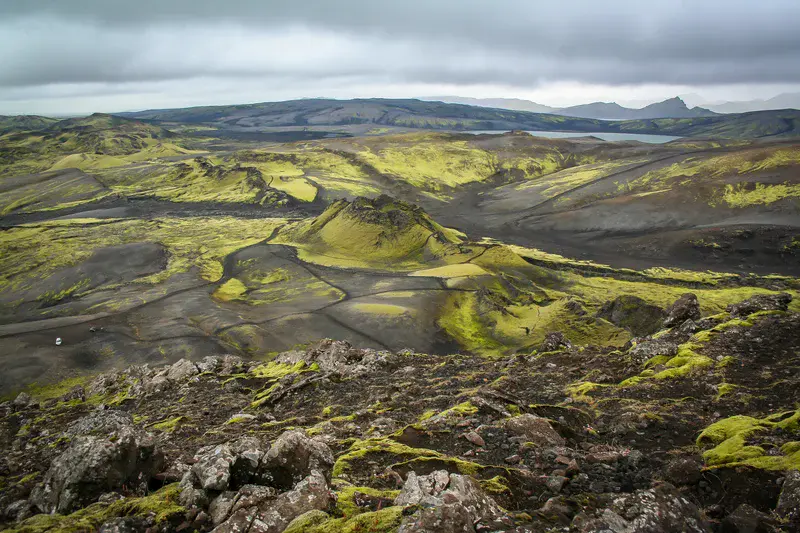
From Fires to peaceful landscape
This colourful, peaceful landscape in southern Iceland represents a place where the second largest basaltic flood lava eruption in the historical time occurred in the early summer of 1783. A 25 km long eruptive fissure opened here from the Grimsvötn volcano and close to 15 cubic kilometre lava extruded and covered 600 square kilometre area during just only 8 months. More than hundred volcanic cones developed along the fissure, where tall lava fountains and ash clouds reaching the stratosphere were resulted by the explosive eruptions. The consequence of this volcanic event was disastrous: animals perished because of dental and skeletal fluorosis and 25% of the population in Iceland died in the famine. The vast amount of emitted sulphur-dioxide caused dry smog followed by a strong climatic change across Europe. Crop failures caused famine and strong social and economic crisis. The Laki eruption weakened the African and Indian monsoon circulation leading to much less precipitation than normal causing low flow in the river Nile, among others. Now the gorgeous landscape covered by green mosses and dark basaltic scoria is quiet but it teaches us that such situation can change rapidly…
Categories
- Climate: Past, Present & Future (742)
- Field (2899)
- Geochemistry, Mineralogy, Petrology & Volcanology (990)
- Geodynamics (372)
- Geomorphology (1407)
- Natural Hazards (526)
Location
- Europe (3893)
- Northern Europe (924)
- Iceland (287)
- Exact location (-18.1794 W, 64.0845 N)
Tags
Colours
Image properties
3456 × 2304 px;
image/jpeg; 4.4 MB
Camera:
Canon EOS 350D DIGITAL
Software: Lightroom
Taken on 25
August
2008
Submitted on 15 February 2020
Licence
Creative Commons Attribution 3.0 Unported (CC BY 3.0)
Credit
Szabolcs Harangi (distributed via imaggeo.egu.eu)
Share
Appreciate
Report